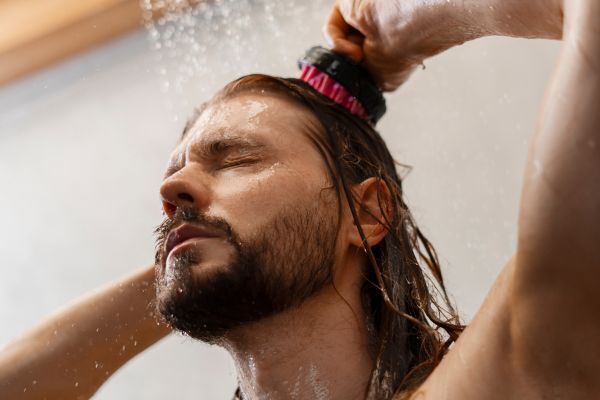How to Choose Hair Products That Complement Beard Care
Jul 30, 2025 | By Maria Eliza Pineda

Hair care and beard care go hand-in-hand. However, it’s not as easy as just using the same products on both the hair on your head and the hair on your face as they require different types of care. The key is to select hair products for beard care that’s compatible with the hair and skin on your face. While it may take a bit of extra effort, it’s not at all impossible as a lot of hair care ingredients can be used on the beard area. It’s just a matter of finding the right combination.
Why Your Beard Needs Compatible Hair Products
While scalp and beard hair are made of the same type of protein (keratin), the hair and the skin behave differently. For example, beard hairs can be a bit more stiff and coarse than your scalp hair and the skin underneath your beard is a lot more sensitive than your scalp. Hair products that you typically use on your scalp may cause irritation when used on your face. This can lead to clogged pores, dryness and brittleness, uneven texture, and acne breakouts.
You may be surprised to know that your scalp produces more sebum than your skin. That’s why shampoos have strong detergents that are designed to clean your scalp thoroughly. However, these detergents as well as fragrances usually found in hair products can dry out and irritate your beard area.
Using beard care hair products that are compatible with your beard hair and your face is crucial. You need a gentle cleanser that won’t dry out your face but will cleanse your beard at the same time. You also need moisturizing products such as beard oil and balm that will keep your beard hair and skin hydrated and groomed.
Key Ingredients to Look For in Hair-and-Beard Friendly Products
Sulfate-Free Cleansers and Mild Surfactants
Sulfates are detergents often found in shampoos. While this has been typical for a good amount of time, sulfates are slowly being limited in hair shampoos over the years because of their harshness even on the scalp. Naturally, you should stay away from sulfates completely when it comes to beard care. Look for sulfate-free shampoos or dual-purpose beard shampoos with milder types of detergents such as soapberry, Cocoyl Methyl Taurate, coco-glucoside or decyl glucoside.
Lightweight Moisturizers: Jojoba, Argan, Sweet Almond, Coconut Oil

Jojoba, argan, sweet almond oil, and coconut oil are all hair oils that are compatible with both the beard and scalp hair as well as the skin underneath. They moisturize the strands and the skin without clogging the pores or any irritation.
pH-Balanced Formulas for Facial Skin Health
The pH balance of your scalp hair shampoo may not be compatible with your facial skin. For your face, it’s advisable to keep your shampoos and conditioners at a pH balance of around 5.5 to avoid any redness, inflammation, and itchiness. This creates grooming synergy to make sure that your products are in harmony for both your face and your scalp.
Ingredients to Avoid When Grooming Both Hair and Beard
Harsh Alcohols, Silicones, and Parabens
Denatured alcohol, isopropyl alcohol, dimethicone, and parabens are all very harsh ingredients that can cause dehydration and breakage. Avoid these ingredients completely for your beard care as they can cause long-term beard hair loss and skin conditions.
Strong Fragrances and Allergens
Fragrance is a known irritant. While your scalp may be able to take it, it’s not advisable to use products with strong synthetic fragrances on your face as they can cause allergic reactions. If you prefer a product that still smells good, opt for those that use natural fragrances such as essential oils.
Clarifying Agents That Strip Natural Oils
Your beard area doesn’t need any strong clarifying agents. Washing daily with a gentle cleanser should be enough. Never use any clarifying shampoos or scrubs on your beard as they may strip away natural oils and irritate your skin.
Product Categories That Work for Both Hair and Beard
Dual-Purpose Shampoos and Beard Washes
Some brands offer dual-purpose cleansers that are designed specially to work for both the scalp and beard. These contain ingredients that are gentle and safe to use for both areas. If you want to make life a bit more minimal and simple, going to a dual-purpose cleanser may be for you.
Lightweight Conditioners and Leave-In Sprays
A conditioner for beard hair should hydrate without weighing down strands or leaving a greasy residue on the face. Opt for lightweight, silicone-free conditioners or leave-in sprays with hydrating botanicals like aloe, oat protein, or chamomile.
Multi-Use Oils and Balms
Non-comedogenic oils like argan, sweet almond, jojoba, and coconut oil can be used to hydrate both the scalp and beard area. Choose a beard-friendly hair oil or balm that lists these ingredients high on the label and has no synthetic fragrance or occlusive waxes.
Routine Tips and Application Techniques for Harmony

Washing Order: Scalp First, Then Beard
Shampoo your scalp first and rinse thoroughly. After that, you may apply your dual-purpose cleanser to your beard area and rinse. This makes sure that your beard gets the last wash and won’t get contaminated by any impurities washing off your scalp.
Conditioning Facial Hair: How Much and How Often
Use a pea-sized amount on your beard when needed. You can use less depending on the product that you’re using. Just remember that you can always add more but adding too much can make your beard look and feel greasy or heavy.
Styling With Beard-Safe Products
Use only beard-safe styling products for your beard. This is especially important as most styling agents contain ingredients that are harmful to the skin on your face. Avoid petroleum and heavy silicones.
Crafting a Balanced Hair-Beard Regimen
Is it possible to create a hair and beard care routine to complement each other? Absolutely! It may be the most convenient way to keep your routine minimal and simple. You don’t have to sacrifice anything as you can find products that are compatible with both your scalp and hair. It’s all about doing your research and knowing what ingredients to look for and which ones to avoid.




